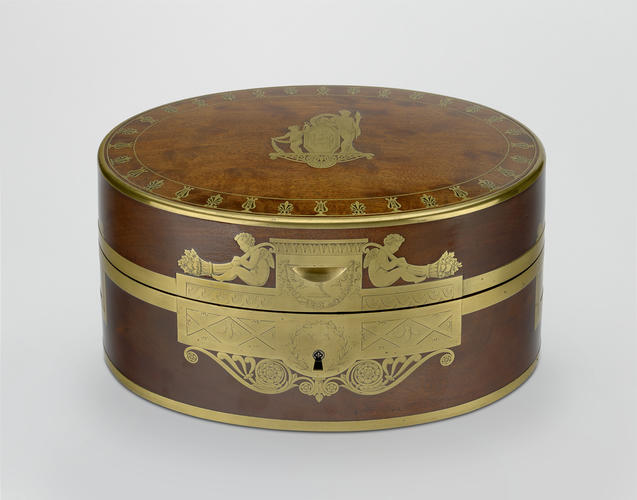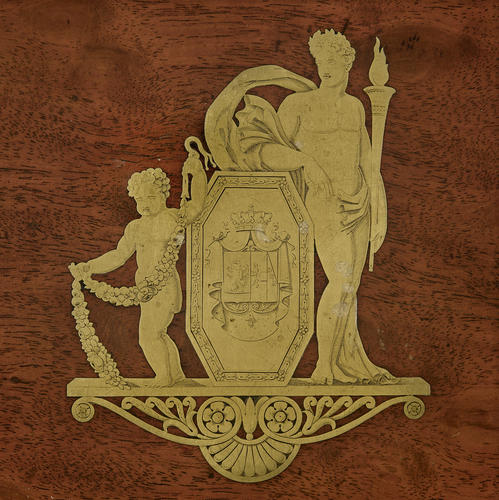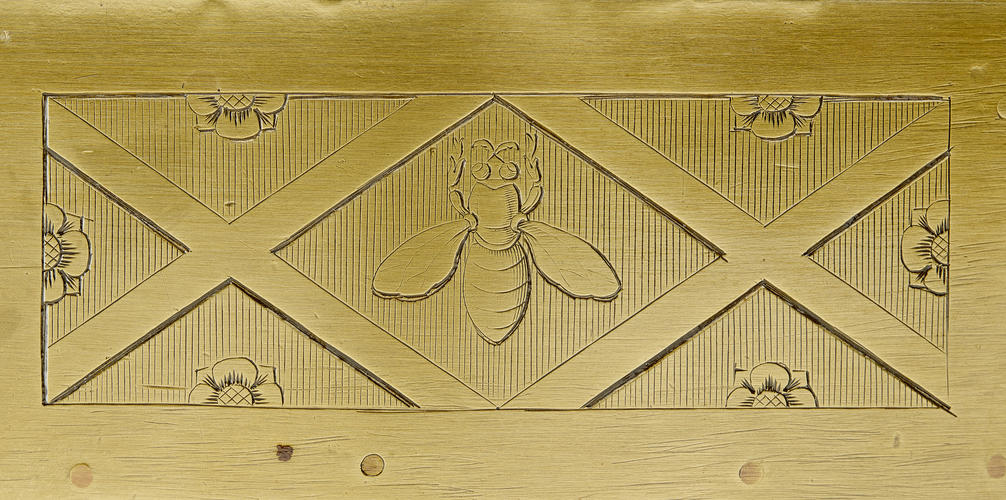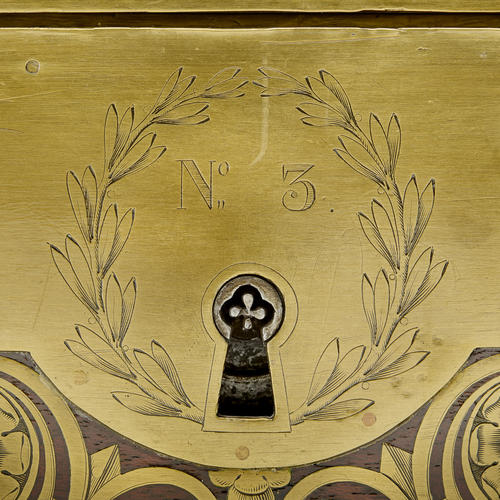Necessaire case 1810-14
Mahogany, gilt metal | 18.4 x 35.5 x 24.0 cm (whole object, oval) | RCIN 61160
-
Oval mahogany case; the hinged cover inlaid with an engraved gilt brass coat of arms (of Napoleon I and his second wife Empress Marie Louise), surmounted by a crown, with a male figure with torch on one side and a putto with a rope of flowers on the other. The border inlaid in brass and ebony with lyres and anthemions. The lockplate inlaid with two putti holding cornucopiæ and engraved with Napoleonic bees and Vitruvian scrolls with a laurel wreath, scrolls and roses. The ends are fitted with brass flush handles. The contents are now missing. With key.
Provenance
Martin Guillaume Biennais (1764–1843) was originally a cabinet maker and tabletier (dealer and maker of small objects) with established premises by 1789 at 283 rue St Honoré 'Au Singe violet' (at the sign of the purple monkey). With the ending of guild restrictions following the passing of the Chapelier laws in 1791 he diversified his business to include the production of silver and gilt items. He supplied items to Napoleon Bonaparte and his family from as early as 1798 including, in 1804, the Emperor's crown and sceptre for his coronations in Paris and Milan. After 1804, he was permitted to mark his objects 'Goldsmith to Napoleon' or 'First Goldsmith to the Emperor'. This piece is engraved on the lock 'Biennais Orf.re de LLMM. Imp.les et Roy.a Paris' [Biennais Orfevre de Leurs Majestes Imperials et Roi à Paris].
Biennais supplied many of the silver and gilt items to the partnership of Charles Percier and Pierre François Léonard Fontaine, designers of residences for the Emperor including Malmaison and Fontainebleu. In addition he supplied other royal houses in Russia, Austria and Bavaria with silver and silver gilt items.
Necessaires came into fashion during the Regence (1715-23) in France to describe cases with fitted compartments containing sets of utensils for taking tea, coffee and chocolate. By the mid-eighteenth century it was used as a wider term used for cases containing toilet services, breakfast sets, needlework and writing equipment and for travel where smaller, more convenient articles were accommodated together in a single case. Biennais was the specialist in this field.
In 1810, on her marriage to the Emperor Napoleon, Marie-Louise was presented with a necessaire which is now in the Schatzkammer of the Residenz in Munich. She also owned several examples of necessaires by Biennais.
This case is possibly the smaller of two necessaires purchased on behalf of the Prince Regent and part of a consignment delivered to the Custom House, via Paris and Dover, 15 November 1819 by François Benois, his pastry chef and agent; also recorded by Benjamin Jutsham, the Prince's Inventory Clerk. in 1820 regarding repairs.
Placed in the Queen's Closet by Queen Mary, April 1936. -
Creator(s)
(nationality)Acquirer(s)
-
Medium and techniques
Mahogany, gilt metal
Measurements
18.4 x 35.5 x 24.0 cm (whole object, oval)
Object type(s)












